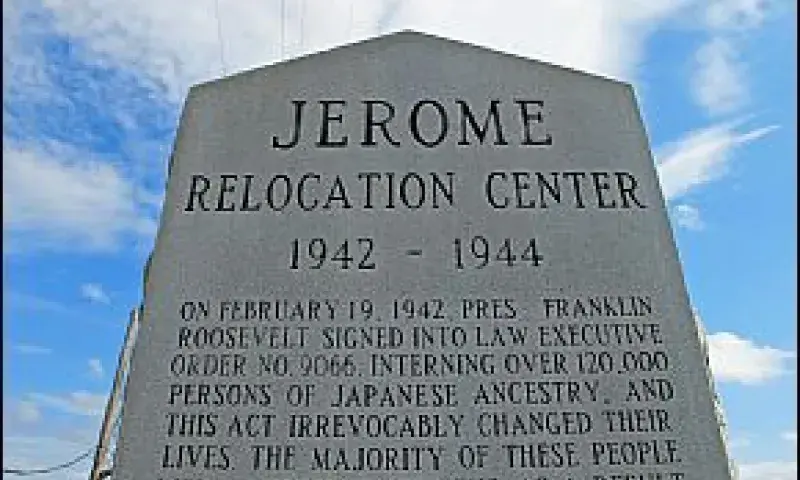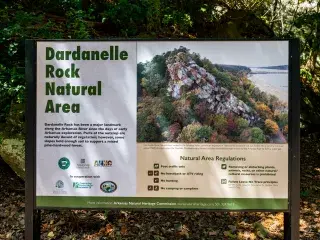Jerome
Resettled farmers, Japanese Americans, and German prisoners of war all have called Jerome home at various periods during its history. Located near Bayou Bartholomew and first called Blissville, it was a main route used by travelers during Arkansas’s territorial period. The town remained sparsely settled, however, until the early 1900s when a sawmill operation and other businesses were established near the newly completed rail line through the area. After the sawmill owner officially incorporated the Jerome Hardwood Lumber Company in 1919, named for his son, the town followed suit the next year and changed its name from Blissville to Jerome.
Though Jerome prospered during the 1920s, the sawmill burned in 1927 and the planning mill operation went out of business with the onset of the Great Depression. The land and buildings ultimately were sold to the federal government for a New Deal resettlement colony, housing 36 out-of-work farm families from the Sunnyside Plantation in Chicot County.
When the United States entered World War II, a different kind of resettlement program was established. Jerome became one of ten internment camps in the country to house Japanese Americans forcibly removed from their homes on the West Coast. It was one of two camps established in Arkansas, the other being at Rohwer, with the remaining camps in western states. More than 8,000 Japanese Americans were incarcerated at Jerome between October 1942 and June 1944, when internees were relocated to other camps. After their removal, buildings were used for a German prisoner of war camp until the end of the war. Though little remains of the Japanese American internment center, a monument marks the location.
Though Jerome is in southeastern Drew County, it is more closely aligned with Dermott in Chicot County, less than 10 miles north along U. S. 165. It is 122 miles southeast of Little Rock and 78 miles southeast of Pine Bluff.






